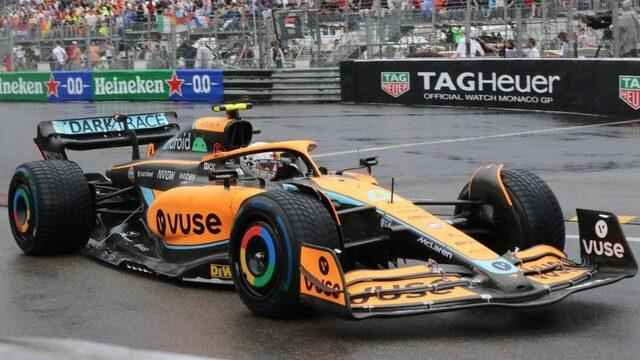Most of us think that we have a twin who looks exactly like us somewhere in the world, and that this strange yet very familiar figure will pass us by while we are walking down the street one day.
Imagine creating a copy of yourself that looks exactly like yourself, with the most important difference being that it leads a completely digital life.
We live in an age where almost everything that exists in real life is copied in the digital world: cities, cars, houses, even people.
The often mentioned topic of digital twins, such as the multiverse (metaverse) planning a virtual, digital world in which an avatar of yourself will be released on its streets, has also been at the top of technology trends lately.
A digital twin is an exact copy of something that exists in the physical world. But the digital twin has only one purpose: to help further develop the real-life version, in a sense, to provide real-life feedback.
In the first place, such digital twins were just complex three-dimensional computer models. However, with the combination of artificial intelligence and the internet, it was possible to build digital replicas that constantly learn and evolve from the real thing.
Technologist Rob Enderle believes we will meet the first versions of human-thinking digital twins before the 2020s are over.
“The creation of these replicas requires a lot of thought and ethical considerations, because creating our thinking replicas can be very attractive to employers,” says Enderle.
“If your firm creates your digital twin and says, ‘Look, we don’t pay your digital twin a salary, why should we still keep you in business?’ If he asks, what then?”
Rob Enderle thinks that whether or not to have a digital twin will become one of the most important question marks of the metaverse age.
Science**like a fiction novel**
At present, work has begun on the creation of the human twin. However, these avatar works are still in a very crude and primitive stage.
For example, on Meta’s virtual reality platform Horizon Worlds, you can give your avatar a face similar to your own, but your avatar doesn’t have legs yet, because the technology hasn’t reached that level yet.
Professor Sandra Wachter, a researcher in artificial intelligence studies at Oxford University, agrees that the idea of producing digital twins of humans is very attractive.
“This is reminiscent of exciting sci-fi novels, and that’s where we’re at right now,” Waschter says.
Professor Sandra Wachter said: “Gene or environment?” (nature vs. nurture) will depend on the question,” he says.
Stating that luck, friends, family and socio-economic background, environment and of course personal choices will be effective in this, Professor Wachter underlines that artificial intelligence is still insufficient to predict such social events and says:
“We have to go a long way to understand and model a person’s life from beginning to end, if that is possible one day.”
Today, digital twins are used extensively and on a complex level in areas such as product design, distribution and urban planning.
In Formula 1 races, for example, McLaren and Red Bull teams use digital twins of their racing cars.
On the other hand, DHL, one of the important companies of the cargo sector, is making a digital map of its warehouse and supply chains in order to achieve better efficiency.
Digital solutions against climate change
More and more, copies of our cities are made in the digital world. Digital twins of Shanghai and Singapore have been produced in order to improve the design of transportation systems, streets and buildings and to monitor their activities.
In Singapore, one of the missions of the city’s digital twin is to help suggest new avenues for people who want to avoid areas with high air pollution.

Some cities are using this technology for infrastructure works, for example, to determine where new metro lines should be built.
Some new cities in the Middle East are also being built simultaneously, both in the real world and digitally.
French software firm Dassault Systemes says it has received offers from thousands of companies for its digital twin technology.
Thus, it is possible for other companies to design new futuristic projects: Jets with flying wheels or motorcycles or even flying cars can be designed.
Physical prototypes of these are made later, of course, but the modeling is carried out on a digital plane until the final stage.
It could revolutionize medicine
The area where digital twins will add the most value is expected to be healthcare services.
Dassault’s Living Heart project creates a virtual model of the human heart that can be analyzed and analyzed, allowing surgeons to ask, ‘What if I intervene there?’ envisions being able to implement many scenarios of the genre here, using many methods and medical equipment in this way, using trial and error method.
Dr. Developed by Steve Levin, the project sprouted from Levin’s personal needs in his private life.
A few years ago, Levin decided to create a virtual reality replica of her daughter’s heart for the treatment of her daughter, who was born with a congenital heart defect and was at increased risk of heart failure when she was 20 years old.
A children’s hospital in Boston is using this technology to map real patients’ heart conditions. The same technology is being developed at Great Ormond Street Hospital in London for use in the treatment of children suffering from rare and difficult-to-treat heart diseases.
Dessault’s global director, Severine Trouillet, states that experiments on a digital heart will also reduce the need for animal testing.
The firm plans to produce digital twins of various other organs these days, including the eye and even the brain.
Earth’s twin
If there is a more ambitious project than replicating human organs, it is to produce a digital copy of the entire planet.
The Omniverse platform, operated by the US software company Nvidia, is designed to create virtual worlds and digital twins.
The platform’s most ambitious goal is to build a digital twin of the Earth’s entire surface with high-resolution photographs.
In this project, called Earth-2 (Earth-2), it is hoped to develop solutions to problems such as climate change by using deep learning models and neural networks.
In March, the European Commission and the European Space Agency also announced their own plans to make a digital twin of Earth.
